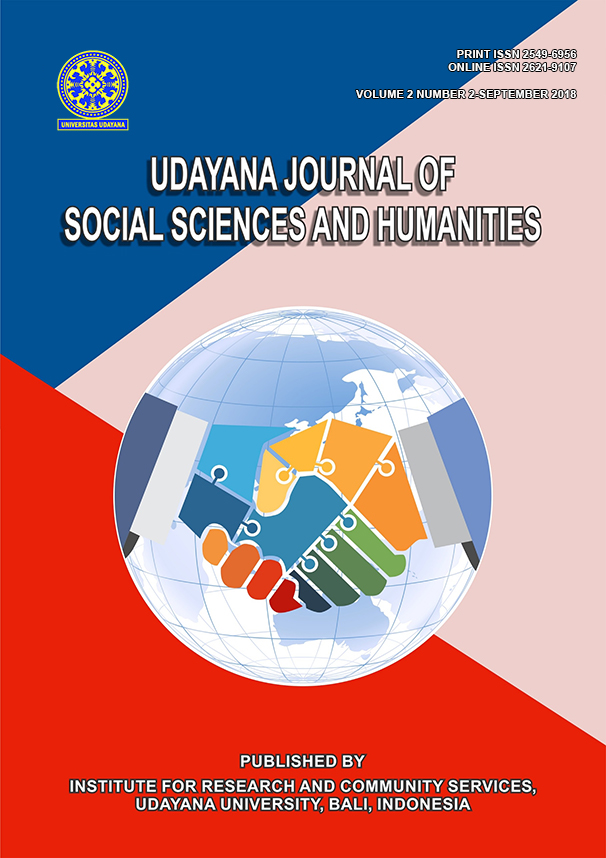Archaeological Artifacts at Cultural Village Regionof Kemoning, Klungkung
Abstract
The research toward archaeological artifacts at Cultural Village region of Kemoning aims to reconstruct every aspect of life (history, behavior and cultural process) of society in the past, so that people may recognize, understand, comprehend everything about their villages, growing a confidence on living in villages, and join to participate in cultural preservation step in the future. Cultural village of Kemoning has many archaeological artifacts and cultural/ traditional values which still applied in community. Meanwhile its artifacts, like statues, sacred stones/prehistoric stones, inscriptions made of copper and palm leaves, puppet reliefs in the walls, ancient place of worships (pelinggih), temples’ gates (paduraksa and symmetrical arches (candibentar)), creese/spears, etc. Artifacts/statue relics in this village is quite many, with various figures being made statues, among others Trimurti statues (Brahma, Vishnu, Shiva), ascetic statues, Bhatara di gumi statues (statue/manifestation of ancestors of Kemoning village riding horses), naked statues believed as the symbol of fertility/ expectation for babies, pennant statue as god of art (dance, etc.), statues of gods/ goddess, statue of Ganesha, and statues of other figures. Cultural village of Kemoning has many ancient temples, among others: temple of KahyanganTiga, temple of Dang Kahyangan, temples which its location as crossers (penyirang) (northeast, southeast, northwest, and southwest), temples of kawitan, temples of paibon, and many more of shrines (pelinggih/penyiwianbhatara). The position of these temples which show pattern position directing to every corner of compass’ point raises hypothesis by the author , that is whether at that time the teaching of SiwaSidhanta had developed? And whether people of Kemoning at that time had recognized the concept of “mandala” in designing/setting their village? Also, to determine what is the best cultural concept to be maintained/developed in the future?. In addition, Kemoning village also has a set of magical ancient gong, subak/ pekaseh system, tradition of magibung, tradition of ngayah, ngupadesa, ngusabanini, and kinship with other communities in other regions. Various ancient contents owned by Kemoning community, therefore it is necessary to be revealed specifically, to be known by people, our offspring and public.






